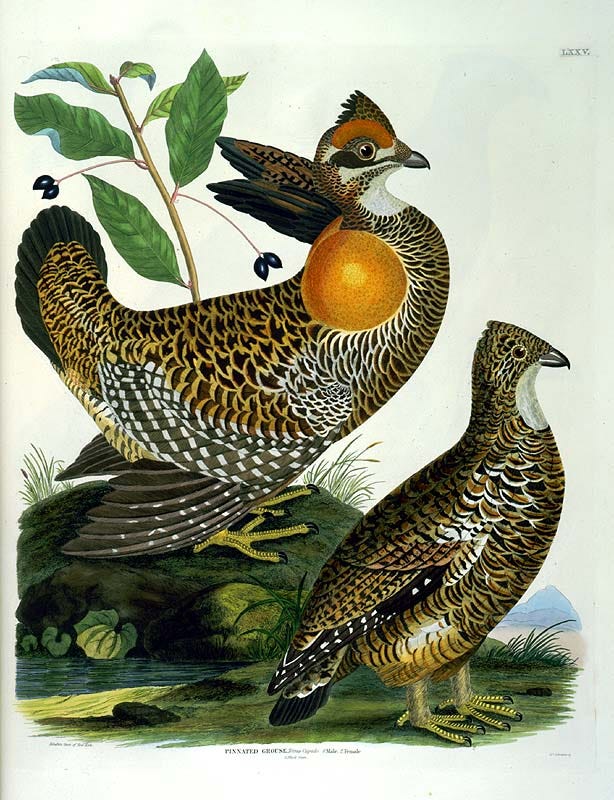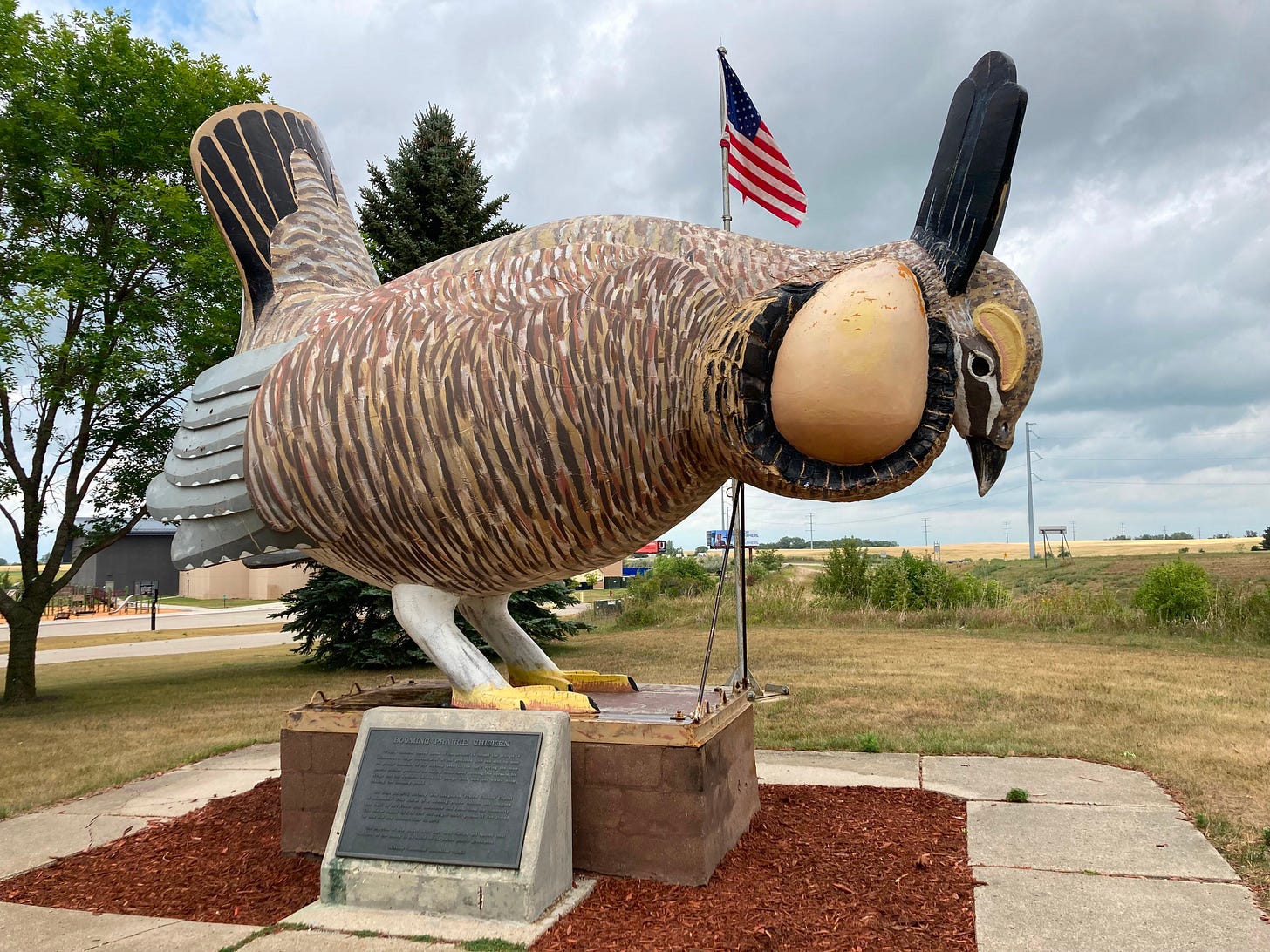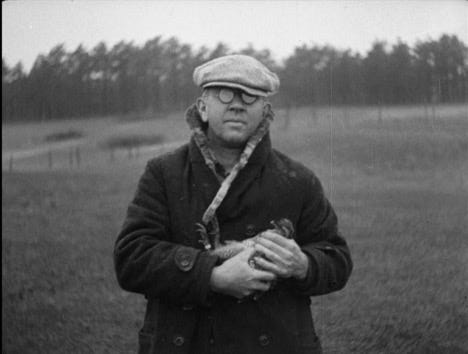
The Heath Hen was the most peculiar bird on a peculiar parcel of land on Long Island, New York.
There once was a prairie—not a meadow or a field but a true prairie—that stretched across the land east of Queens. The Hempstead Plains featured horizontal strata, level surfaces, and finely divided soil, much like the prairies of the heartland. The plains were mostly treeless, with herbaceous vegetation about knee high. The few stunted and scattered trees were Gray Birch, Blackjack Oak, Post Oak, and Pitch Pine.
The Heath Hen (Tympanuchus cupido cupido) lived in that prairie, feasting on an obscure type of berry. But it wouldn’t last. The partridge-like birds are now mostly known in the company of other extinct North American species like the Carolina Parakeet, Great Auk, Labrador Duck, and the Passenger Pigeon.
What sets the Heath Hen apart, though, is that it was a subspecies of the extant Greater Prairie Chicken, aka The Best-Known Grouse of the Western States (check out my teaser video here). So the Heath Hen is still with us in a way. There’s one remaining Prairie Chicken population in Illinois, and others in places like Minnesota, Nebraska, and the Dakotas. The Prairie Chicken was truly prolific, spanning from the Atlantic Ocean to the northern Great Plains. The booming calls of the Prairie Chicken, or Pinnated Grouse, were an aspect of the prairie often remarked upon by European settlers. The Lesser Prairie Chicken of the southern plains, a close cousin, has been in the news lately because of an ill-advised attempt to take it off the endangered species list.
Again, the Heath Hen and the Prairie Chicken are indeed the same bird. The only difference in plumage between the subspecies is in the feathering of the axillaries, what are essentially the “armpits” of a bird. The axillaries under the wings of the Heath Hen were strongly barred with slate brown; the axillaries of the Prairie Chicken are all white with faint barring. The degree of difference—at least in appearance—was about the same, if not less than, the various subspecies of Dark-eyed Juncos or Song Sparrows.

The Heath Hen’s range once stretched from Virginia to New Hampshire. Some think the tasty Heath Hen was the game bird served at the first Thanksgiving dinner. Its strongholds were open places like the Hempstead Plains in New York, the Pygmy Plains of New Jersey, and Martha’s Vineyard in Massachusetts.
Alexander Wilson described the Heath Hen at that bizarre prairie on Long Island in his 1808 American Ornithology.
This district of the island may be estimated as being between forty and fifty miles in length, extending from Bethpage, in Queen’s County, to the neighborhood of the court-house in Suffolk. Its breadth is not more than six or seven.
The region in which these birds reside lies mostly within the towns of Oysterbay, Huntington, Islip, Smithtown, and Brookhaven; though it would be incorrect to say, that they were not to be met with sometimes in Riverhead and Southampton. Their territory has been defined by some sportsmen, as situated between Hempstead Plain on the west, and Shinnecock Plain on the east.
Wilson’s account is one of the more thorough early descriptions of the Heath Hen. It wasn’t mentioned by early 18th-century naturalist Mark Catesby, though his travels were farther south, in the Carolinas. Some of the challenge may have been confusion with the Ruffed Grouse, a bird of northern and Appalachian forests.
Wrote Wilson:
It is somewhat extraordinary that the European naturalists, in their various accounts of our different species of grouse, should have said little or nothing of the one now before us, which, in its voice, manners, and peculiarity of plumage, is the most singular, and in its flesh, the most excellent, of all those of its tribe that inhabit the territory of the United States.
Wilson then makes the connection between the Prairie Chicken and the Heath Hen, stating that the former lived “On the luxuriant plains and prairies of the Indiana territory, and Upper Louisiana; and according to information from the late Governor Lewis, on the vast and remote plains of the Columbia river.” So it’s been known for some time that the Heath Hen was quite related to the Prairie Chicken.
Prairie Chickens were relatively tame birds and very plentiful in the Midwest through the mid-1800s. They gained the nickname “boomer” for that strange whooping sound during the breeding season. They were tasty, too, and a favorite target as sport hunting grew in popularity.
Charles Hallock was the Founder and Publisher of Forest and Stream, which eventually became Field and Stream—a periodical still with us today. Hallock’s Sportsman’s Gazetteer was a comprehensive field guide to hunting across much of the United States, detailing species and the tracts where they could be found. While Heath Hen had all but vanished from the east by 1850, the Prairie Chicken initially grew in numbers as the plains were settled and a mosaic of habitat types appeared.
“No member of the grouse family is better known than the Prairie-Chicken of the western states,” wrote Hallock, “and none is more numerous or more eagerly sought for by sportsmen.”
Back east, and a few decades earlier, Wilson also wrote of the Prairie Chicken/Heath Hen in Massachusetts and Martha’s Vineyard, which ultimately would be the last redoubt for the subspecies.
A few still remaining on the island of Martha’s Vineyard [at the time of writing] and also at Nashawena [Island], and where it was, in the early settlement of the country, a very abundant bird…They were observed to feed on the batteries of the barberry, which abound on those islands, box berries, cranberries, the buds of roses, pines and alders, and on the nuts of the post-oaks, and in the summer upon the more esculent berries.
The Heath Hen was considered “very numerous” in the colonial era at both the Hempstead Plains and Pygmy Plains. But over-hunting left them confined to Martha’s Vineyard as early as the 1850s. Game laws were in their infancy and lacked enforcement that might be a deterrent. The Heath Hens’ peculiar behaviors left them vulnerable. They were prone to destroy the eggs of other males’ nests, and often sat stock-still incubating eggs even as deadly fires and storms approached them. Grouse also have been known to remove eggs to their nest from other hens, a perilous task that surely resulted in many a lost clutch.
The isolated Vineyard, located four miles off-shore from Cape Cod, couldn’t remain a haven for the Heath Hen forever. Without a secondary population elsewhere, extinction was a very real risk. Severe winters affected them as well as an “invasion” of American Goshawks. A destructive fire swept through the last remaining colony in 1916. A little more than a decade later, the population was all the way down to just a single Heath Hen. He earned the nickname “Booming Ben” as he frequently called for a mate to no avail. On March 11, 1932, Ben disappeared and his remains were never found.

What became of the peculiar plain in the middle of Long Island? It too is essentially gone, swallowed up by the march of development east from New York City. At least one small preserve is intact, though, that is a remnant of the Hempstead Plains.
Like other extinct birds, the Heath Hen should be a cautionary tale for humanity. All that’s left are fragments of habitat the birds enjoyed, like New Jersey’s Pygmy Plains, sometime also called the Grouse Plains. Alfred Otto Gross, pictured above, notes one of the Heath Hen’s most popular foodstuffs, found from the Vineyard to southern New Jersey.
“The partridge berry, Mitchella repens, was so frequently eaten by the Heath Hen,” Gross notes, “that earlier settlers called [it] the ‘heath-hen plum.’”
In a 2010 piece for Living Bird, writer Jack Connor captured the essence of what’s left in a place like the Grouse Plains—where quite a bit of habitat has been protected. The reality is that while some bird species are gone, we still have connections to their ecology that are living reminders of society’s failure. Protecting those little remnants are what may keep us going. For some it might be the partridge berry, for others, it might be the Bur Oak in the nearest forest preserve that once fed the Passenger Pigeon.
Wrote Connor:
Walking around in the sun out in the Pygmy Plains thinking about these events sometimes makes me light-headed. When the heat and the emptiness become too much, I like to search out the damp spots where Mitchella repens grows, kneel down, and push aside its paired, glossy-green leaves. The scarlet fruits sit hidden beneath, within an inch or two of the ground, so bright and ripe they seem irresistible. Yet, I have never seen a bird of any kind pluck them.
“We are hoping for T. cupido cupido to come by,” the heath-hen plums seem to say.
“Yes, I know,” I reply. “Me too.”
This post was inspired by my work on the upcoming exhibition Winging It: A Brief History of Humanity’s Relationship with Birds. If you’d like to become a sponsor of the exhibition, and have your name in the gallery, please review the details here, the deadline for sponsorships is March 1, 2025. Alternatively, let me know directly and I will put you in touch with my colleague who is arranging the sponsorships.



Cautionary tale indeed. Rooting for conservation efforts to save our remaining prairie chicken populations.
I am entranced by the writing style which includes so many asides and cul de sacs that simply charm and educate at the same time.